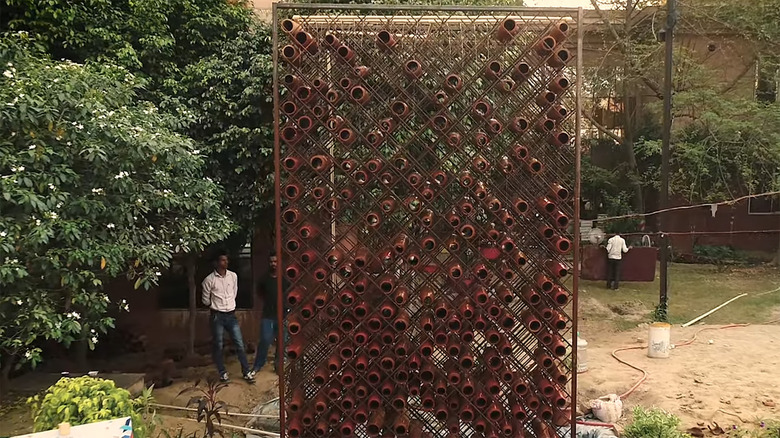This Company Designed Walls That Can Cool A House Without Any Electricity
An Indian architect has come up with an astounding new way to cool buildings and homes that don't rely on electricity or chemicals. The new solution relies on traditional cooling techniques with modern design, all at a lower cost than standard air conditioning systems. The trick? A special beehive wall made of several tiny pieces that use the properties of the materials and physics to help cool the building down.
The trick behind the special beehive system is evaporative cooling, which has been utilized for centuries, the architect behind the project says. Essentially, the walls are created using earthenware pots that are soaked in water. As the water evaporates, it creates a cooling effect, which can help cool down the buildings that the walls are attached to.
But the beehive walls can do more than just cool the area around them. They can also help with air pollution as a byproduct of evaporation, which is an enhanced biofilm on the pots, which helps purify the air around them. And, because the design uses zero plastic and there are zero emissions, it could act as a great replacement for traditional cooling systems.
This method of cooling has been used by multiple civilizations throughout history. Romans and Egyptians relied on wet materials to create cool air. The Egyptians would fan porous jars of water to create cooler air, while the Romans took a much more direct approach by hanging soaking wet, thick sheetlike material on the doors of their houses and tents.
The revival of the technique used by the beehive wall shows how old techniques can be revitalized to help address the growing challenges we face in our modern age. Sure, technology has come a long way, and more modern cooling systems can do a lot. However, those systems also rely on electricity and chemicals, which can contribute to the overall air pollution within an area.
Beyond its environmental benefits, the beehive project will also help revive the slowly dying craft of pottery, which has seen a huge decline in recent years. It will help engage local artisans in the area where the walls are being built and provide more jobs and sustainability in many areas of the economy.
